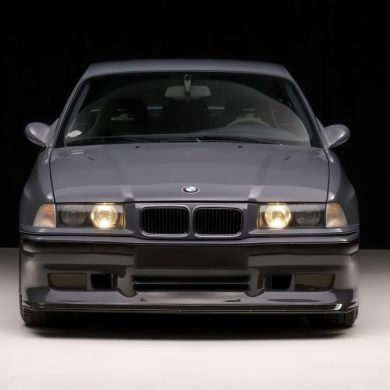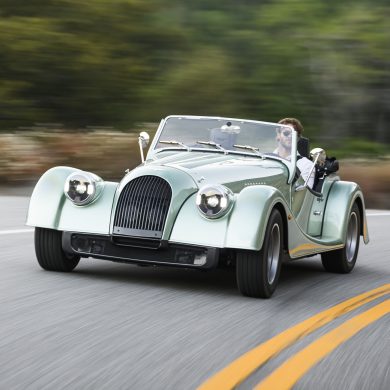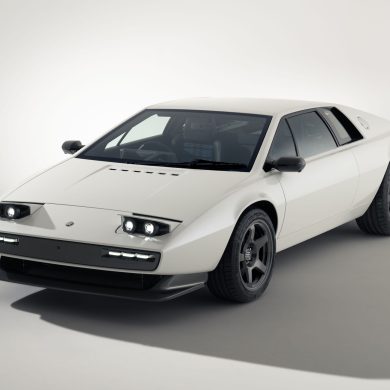On October 28, 2022, after weeks, months, years of teasing, the 2023 Mercedes-AMG One turned a wheel in anger on the infamous Green Hell that is the Nürburgring Nordschleife. While most of the time it is a public toll road, quite often it will get rented out by major manufacturers to test their cars there, as it has every aspect of what a modern or classic sports car needs to be tested against. Low speed corners that test both braking and acceleration in and out of them. One of the longest, fastest straights in the world that tests speed and aerodynamic stability. Sharp elevation changes to test suspension and dynamics. It is, when not being used as a race track or open to the public, the ultimate proving ground. The AMG One managed to cover all 20.832 KM (12.944 miles) in just 6 minutes, 35.183 seconds, breaking the previous record, held by the Type 991.2 Porsche 911 GT2 RS MR, a literal race car for the road, by a hair over 8 seconds.
While this is a widely reported time and fact, what isn’t discussed quite as much is what the Mercedes-AMG One represents in terms of bringing motorsports technology to road-legal cars. This is because the engine, batteries, and four electric motors are not, in this case, known as a performance hybrid. Instead, the Formula One term of “power unit” is used.
The heart of the power unit is the Mercedes-AMG PU106B turbo-hybrid V6 engine, otherwise known as the engine from the dominant Petronas Mercedes-AMG F1 W06 race car that powered Lewis Hamilton to his 3rd World Driver’s Championship title. While some cars have been influenced by, and even borrowed ideas from, F1, the One is the first car to carry over all of the technology of a proper F1 engine. It has been modified, naturally, to operate on 91 octane or better pump gas, and has had its redline curtailed to a measly 11,000 RPM, down from the near 13,500 RPM in the F1 car.
Still, the turbocharged combustion of the power unit provides 422 kW (approx 566 HP), and despite the modifications made, has a service life of only 50,000 KM (31,000 miles), as it is still, technically, an F1 engine, and those get torn down and rebuilt in their entirety between each race weekend. At that 31,000 mile point, the car must be returned to an authorized Mercedes-AMG service center, or if in Europe to AMG HQ itself, for the engine to be torn down, serviced, and rebuilt for the next 31,000 miles. Such is the price to pay when you have an actual race engine in a car, not one based on, or using the design concepts of a race engine

Another first for a street-legal car is the fact that the AMG One has both hybrid technologies from F1 implemented. Most everyone has heard of an MGU-K (Motor Generator Unit – Kinetic) by another name, be it “regenerative braking,” “free-spinning hybrid motor coil,” or other such terms. The One, however, also carries an MGU-H (Motor Generator Unit – Heat), and acts as it does in the race car as both a motor and a generator. It works by having a small DC generator attached to the turbine of the turbocharger via a short shaft, so that as the turbo spins up and compresses incoming air, it also spins a coil inside of a stator in the MGU-H, and creates an electromagnetic charge which is fed to the batteries.
If it becomes powered, it spins up the stator instead, which in turn spins up the turbo faster, eliminating turbo lag entirely. The only major departure from the F1 version of the power unit is that in the W06 F1 car, there were only two hybrid motors, one on the turbo and one in the transaxle. The One carries four independent electric motors, with a 120 kW (approx 161 HP) trans-axle motor (the MGU-K), a 90 kW (approx 121 HP) turbine motor (the MGU-H), and two 120 kW (approx 161 HP) motors, one for each front wheel.

All said, that gives the Mercedes-AMG One a grand total of 782 kW, stated as such because F1 cars use metric measurements. Translated into American, that is 1,049 HP, and because of the intricate complexity of the power unit, it’s impossible to determine torque figures. It will, however, blitz through 0 to 62 (100 KPH) in under 3 seconds, 0 to 124 (200 KPH) in 7 seconds dead, and scream through 0 to 186 MPH (300 KPH) in 15.6 seconds and under a mile (2.2 KM). Top speed is governed to 219 MPH (352 KPH), but it is estimated that the car can reach 225 MPH (362 KPH) ungoverned.
While other F1 tech, such as DRS (Drag Reduction System) opening the rear wing, and ERS (Energy Recovery System) to capture any stray electric energy not used, has been included, the major thing is that the Mercedes-AMG One is the first hypercar, and realistically the first road car, to take an actual Formula One grade power unit and make it work on the road, within all the rules and regulations. It is also the closest, realistically, that we will get to seeing an actual modern F1 car make the lap. That, among quite a few other reasons, is why the One is so significant.











I’m wondering how this can be described as a “production” car? Is there a minimum number which must be produced to qualify; if so what is that?